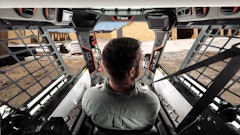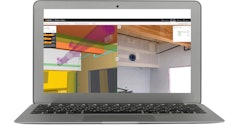

Toposens, a manufacturer of safety equipment, announces the launch of a 3D ultrasonic collision avoidance sensor for automotive and industrial vehicles. Called ECHO ONE, the product is based on proprietary 3D ultrasonic echolocation technology. The ECHO ONE and Toposens processing unit with filters for 3D collision avoidance is now available for ordering.
Based on the principle of echolocation as seen in bats, Toposens ECHO ONE addresses the limitations of optical sensors through sound-based triangulation in combination with noise-filtering software. This in turn delivers 3D data output in real-time for each obstacle detected within the fully adjustable warn-and-stop zones. The zones can both be set to follow a mobile robot taking a left or right turn and adjust to the speed of the vehicle.
The sensor sends the obtained data (echo reflections perceived by three microphones) in a 3D point cloud format to the Toposens processing unit, which is equipped with 3D collision avoidance software.
From there, depending on which 3D zone violations are detected, the Toposens processing unit triggers either a “slow down” or “stop” command to the mobile robot’s CPU. When no zone violations are detected, the mobile robot drives on.
“Being able to detect multiple difficult-to-detect obstacles reliably and in real-time, regardless of environmental conditions, enables us to provide next-level robotic safety for our customers. Our technology addresses the shortcomings of optical sensors, such as LiDARs, which can fail to detect floor-based objects like forklift forks on the floor, in unfavorable lighting conditions or transparent or mirrored object surfaces,” said Tobias Bahnemann, CEO and co-founder of Toposens.
"Receiving data output in 3D, meaning in x, y, and z coordinates, guarantees the most reliable level of 3D collision avoidance."



























